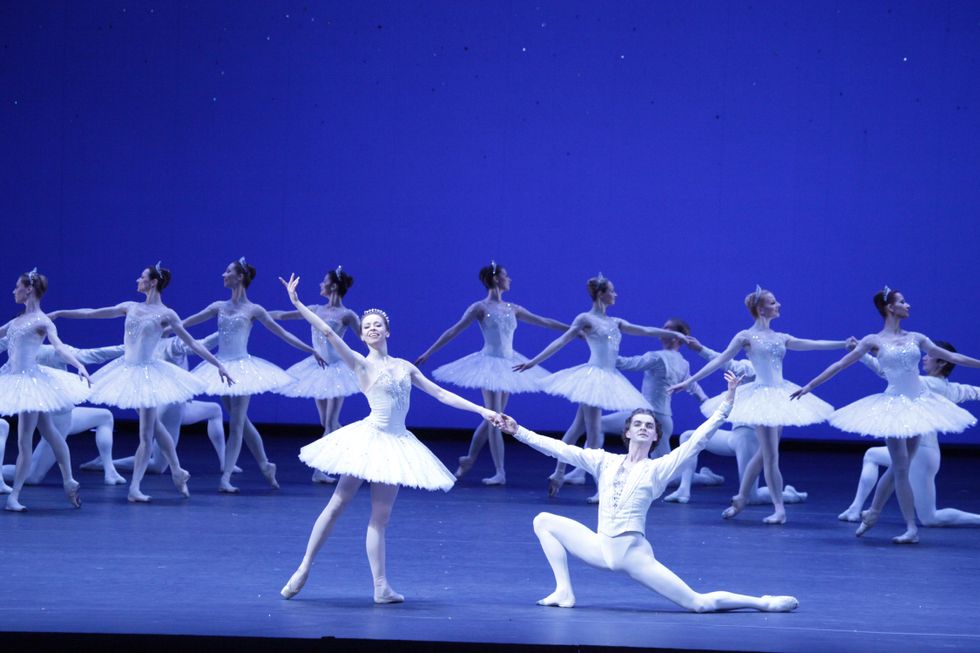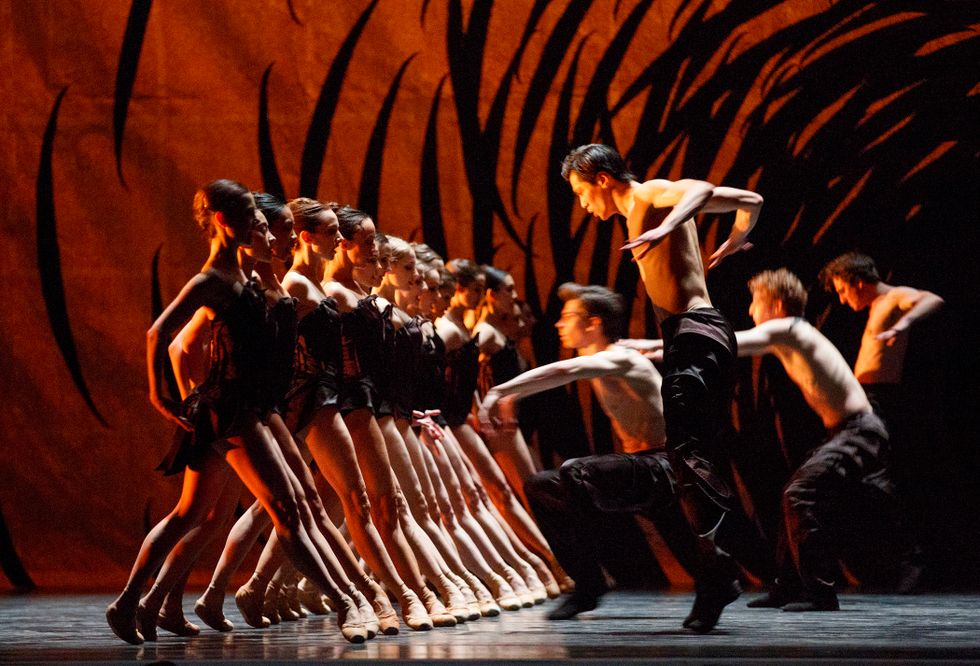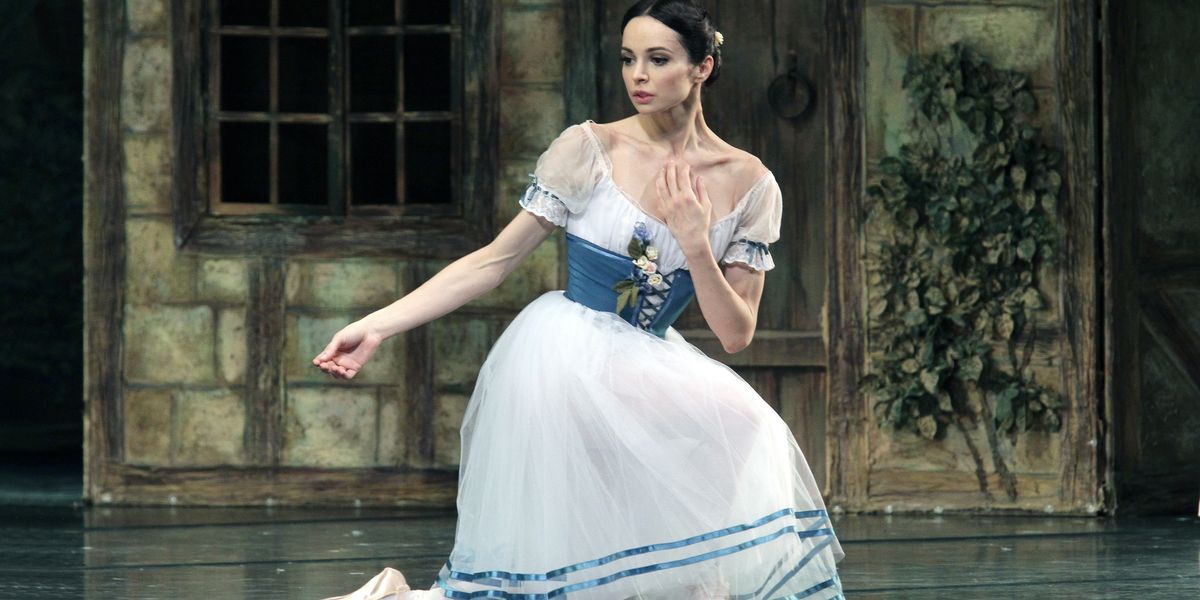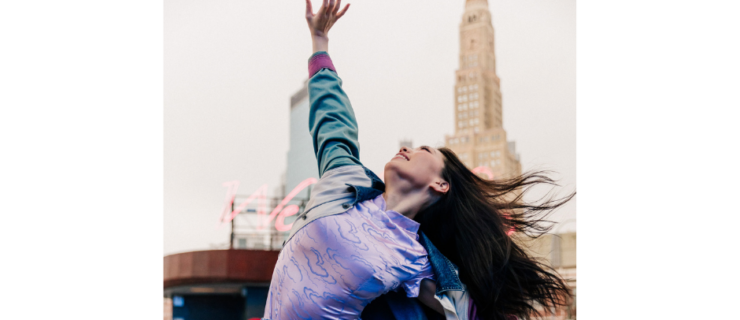Where Are Today's Dynamite Ballerina Roles?
“Ballet,” said George Balanchine, “is woman.” Throughout his long choreographic career, he placed the ballerina at the center of the action, and all eyes were on her. There are numerous examples, from Mozartiana to Theme and Variations, Square Dance and Chaconne.
In this sense, Balanchine was carrying on the tradition of Marius Petipa and other 19th-century choreographers whose story ballets, such as Swan Lake, The Sleeping Beauty and Giselle, featured vibrant ballerinas at the heart of their tales.
Other 20th-century choreographers, like Sir Frederick Ashton with Ondine and Sylvia and Antony Tudor with his Pillar of Fire, also centered some of their masterpieces around a female protagonist. She was partnered with a principal male dancer, but still claimed center stage.

In many Balanchine works, like Diamonds, a central ballerina leads the corps. Photo by Damir Yusupov, courtesy Bolshoi Theatre
But where are the great prima donna roles of the 21st century? Many of today’s top choreographers concoct ballets with impressive corps de ballets that form dizzying, computer-graphic-like patterns. Numerous male and female soloists grab the audience’s attention and then disappear back into the group. Think of Crystal Pite’s Dark Matters or Justin Peck’s In Creases and Paz de la Jolla.
But are they quick to spotlight those juicy ballerina roles? Not really. To many current choreographers, building a ballet around just one commanding female dancer feels like a moth-eaten method of choreographing. To others, it feels too restrictive.
Times Are Changing—So Choreography Is, Too
In many ways, this shift reflects changes in our culture at large. One factor that has indisputably altered our art is the increasing acceptance of same-sex relationships and the rise of gender fluidity.
“There’s more focus now on male-male partnering and female-female partnering, and that shows perhaps a shift away from the singular-ballerina role within a ballet,” says choreographer Christopher Wheeldon. “As the world becomes more accepting of same-sex partnerships, that is inevitably going to influence and inspire artists.”
Choreographer Helen Pickett believes that as gender and racial equality penetrate the ballet world, its center of gravity will move.
“New stories are being created from other people’s histories,” she says. When ballets don’t always come from the imaginations of white men, new perspectives emerge. “I think ballet will spread its wings,” she says, then adds, “but I think we have a long way to go.”
Pickett points out that traditional ballerina roles haven’t always been empowering ones. “Putting the female on the pedestal was a way to say she is untouchable, but not in an elevated way—in a way that she is perhaps suffering,” she says. “There was a lot of that in the Romantic era: Giselle goes nuts for her love. In Swan Lake she turns into an animal.”
In her own work, Pickett has been keen to feature strong female characters, including in her next full-length ballet, an adaptation of Arthur Miller’s The Crucible for the Scottish Ballet.
Where The Singular Ballerina Hierarchy Came From
The traditional hierarchy with a sovereign ballerina at the core emerged from the origins of ballet: a dance for royalty and their court.
“You had the queen or king at the center of it, and it all kind of radiated out,” says Robert Binet, choreographic associate at the National Ballet of Canada. “As our culture has become less hierarchical we’ve seen choreographers more interested in a diverse set of social and, therefore, balletic structures.”

In Crystal Pite’s Emergence uses the power of the group. Photo by Bruce Zinger, courtesy National Ballet of Canada
In today’s ballets, the soloists often stand on almost equal footing with the corps. “They’re part of the patterns. They don’t sit outside the patterns,” says Binet, “so it creates much more of a sense of community.”
Part of that democratic feel can be traced back to ballet’s embrace of modern-dance techniques and crafting, led by iconoclasts like William Forsythe and Wayne McGregor. Contemporary ballet choreography owes much to the more egalitarian modern-dance approach, as Merce Cunningham, Paul Taylor and Twyla Tharp have demonstrated. (Martha Graham, on the other hand, usually featured a grand dame—typically herself.)
Of course, there are some exceptions among current choreographers. Annabelle Lopez Ochoa has created works centered on female protagonists, such as Blanche DuBois and Frida Kahlo. Wheeldon has choreographed a few ballerina-centric pieces, such as Mercurial Manoeuvres. “I think using one central ballerina very much depends on the subject matter of the work and/or on the music,” he says.

Tiler Peck in Wheeldon’s Mercurial Manoeuvres. Photo by Paul Kolnik, courtesy NYCB
Trends Have Pulled Choreographers In Other Directions
Binet points out that the single-ballerina prototype typically has two uses: telling a story with one clear protagonist; or creating an abstract work where the patterns center around one person.
“Anything that lives in-between, which is where I think a lot of dancemakers’ work is landing now, doesn’t really make sense with that kind of structure,” says Binet. “That hierarchy brings such a specific aesthetic and a very rigid structure to exist within. You can find many different ways for the structure to flow when you have more soloists in the work.”
The ways today’s choreographers approach musicality is often more varied—for better or worse—than the example set by Balanchine. In his ballets, Balanchine reveals the three-dimensionality of the score, as the dominant orchestral instruments steer and spotlight the ballerina’s actions, placing her center stage. The oboe in Symphony in C shepherds the ballerina, while the piano briskly propels her through Allegro Brillante. Today’s choreographers are seldom that single-mindedly resolute with their use of music.
And as stagecraft evolves to include multimedia technology like projections, videos, computerized graphics and other wizardry, the focus easily switches from the dancers to the dazzling performance elements. One ballerina, no matter how splendid, can get lost in that mix. On her way to the ball, Wheeldon’s Cinderella, for example, gets vastly upstaged by designer Basil Twist’s mega-sized puppetry.
Choreographers have also turned to men as muses. Alexei Ratmansky’s recent work Whipped Cream pivoted around a sugar-shocked party boy, and “Chamber Symphony,” from 2013’s Shostakovich Trilogy, starred David Hallberg as a tortured artist. (To be fair, Balanchine, like other choreographers, created great male roles like Apollo and The Prodigal Son; but his greatest muses clearly were ballerinas.)

James Whiteside in Ratmansky’s Chamber Symphony. Photo by Rosalie O’Connor, courtesy ABT
Are We Better Off Without One Ballerina?
Plenty of dancers would love to claim the stage in one of those classic queen bee roles. But the old model of spotlighting one ballerina seems like an endangered species. Is that a good thing or a bad thing? Maybe it’s neither. Perhaps ballet has been refashioned to a point without a conventional framework. Using unorthodox vocabulary and a democratic structure to shape ballets seems to be the way of the future.
“It’s a reflection of the way the world is moving socially,” says Binet. “Hopefully our art form is leading. But if not leading, at least keeping up.”




